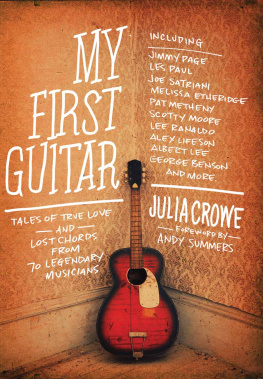Dave Hunter - The Gibson Les Paul: The Illustrated Story of the Guitar That Changed Rock
Here you can read online Dave Hunter - The Gibson Les Paul: The Illustrated Story of the Guitar That Changed Rock full text of the book (entire story) in english for free. Download pdf and epub, get meaning, cover and reviews about this ebook. year: 2014, publisher: Voyageur Press, genre: Non-fiction. Description of the work, (preface) as well as reviews are available. Best literature library LitArk.com created for fans of good reading and offers a wide selection of genres:
Romance novel
Science fiction
Adventure
Detective
Science
History
Home and family
Prose
Art
Politics
Computer
Non-fiction
Religion
Business
Children
Humor
Choose a favorite category and find really read worthwhile books. Enjoy immersion in the world of imagination, feel the emotions of the characters or learn something new for yourself, make an fascinating discovery.

- Book:The Gibson Les Paul: The Illustrated Story of the Guitar That Changed Rock
- Author:
- Publisher:Voyageur Press
- Genre:
- Year:2014
- Rating:5 / 5
- Favourites:Add to favourites
- Your mark:
The Gibson Les Paul: The Illustrated Story of the Guitar That Changed Rock: summary, description and annotation
We offer to read an annotation, description, summary or preface (depends on what the author of the book "The Gibson Les Paul: The Illustrated Story of the Guitar That Changed Rock" wrote himself). If you haven't found the necessary information about the book — write in the comments, we will try to find it.
The Gibson Les Paul is possibly the electric guitar most associated with rock n roll. The result of a collaboration between Gibsons Ted McCarty and jazz guitarist Les Paul in response to the success of Fenders Telecaster, the Les Paul has gone on to become a prized instrument played by most of the greatest guitarists in rock history. This massive illustrated history of the guitar examines its prehistory and origins as well as its evolution in the 60-plus years since its 1952 introduction. In addition to the Standards and Customs guitarists admire so much, author Dave Hunter also gives ample coverage to variations like Les Paul Juniors, Melody Makers, and SGs. And to bring the music to life, there are profiles of players well known for using Les Pauls and their offspring through the years, including Hubert Sumlin, Carl Perkins, Eric Clapton, Mike Bloomfield, Peter Green, Paul Kossoff, Jimmy Page, Neil Young, Peter Frampton, Keith Richards, Bill F Gibbons, Bob Marley, Mick Ronson, Steve Jones, Johnny Thunders, Angus Young, and more. Illustrated throughout with studio photography of the guitars, candid and performance photography of the artists, and relevant memorabilia, this book is prefect for music lovers and guitar enthusiasts.
Dave Hunter: author's other books
Who wrote The Gibson Les Paul: The Illustrated Story of the Guitar That Changed Rock? Find out the surname, the name of the author of the book and a list of all author's works by series.













